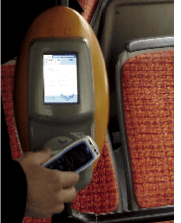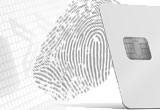German mass transit goes ticketless
By Rhea Wessel
If Joe had an electronic ticket that calculated fares only for the rides he took, he would have about €50 more to spend on a London theater ticket. Creating a more user-friendly and profitable local transit system is one of the goals of a recent project sponsored by the German Mass Transit Association, the Verband Deutscher Verkehrsunternehmen (VDV) with the support of the federal government.
The association, which represents 90 percent of the German public transport market, has developed an electronic ticketing platform that uses a smart card. It is designed to allow cashless ticketing, electronic tickets and automated pricing for individual journeys. The core application embeds ID and transit information in plastic credit-card sized smart cards, cell phones or potentially other electronic devices. It communicates with a reader via RF, says Klaus Philipp, a project manager for VDV who works for consulting company T.C.L. GmbH.
How it works
The core application is the result of years of consultations and tests with local, regional and national transport companies and industry partners such as Siemens, Nokia, Royal Philips Electronics and T-Systems. The partners focused on developing a system that is interoperable nationwide and eventually across Europe. If cooperation at the European level continues, our traveling friend Joe might even be able to avoid London traffic by using his electronic ticket purchased in Frankfurt to pay for a ride on the tube.
While VDV concentrated on developing the core application and will leave designing, selling and operating e-ticket systems up to others, it also set standards for a national e-ticket system. For instance, a user in Munich should be able to easily recognize and use a terminal in Hamburg. Menus and color coding should be the same to keep it simple. Rules, regulations and payment schemes should also be essentially the same.
E-ticket billing
Billing for the e-ticket system would work like the electronic toll payment system, EZ-Pass, in the United States. Most cities or companies serving the cities would offer a pre-paid or post-paid option. The pre-paid system could electronically debit a prepaid account, which could automatically be replenished when it reached a certain minimum. In the post-paid option, the company could send the user a bill like a telephone bill with each ride noted. The charge for all usage would then be debited from the rider’s bank account or charged on a credit card.
The NFC Pilot
Meanwhile, Hanau, a city to the east of Frankfurt, is running its second pilot project with an electronic ticketing system. It was developed together with local transport companies and Nokia and Philips, and will later be made compatible with the VDV core application. The current project, called Get In Handy Ticketing, features a Nokia cell-phone outfitted with smart card chips and is the first-ever test of Near Field Communication (NFC) payment technology. NFC-equipped devices can communicate with other NFC devices at short range or during a swipe. The technology evolved from RFID and networking technology and is compatible with other wireless standards, such as the common data standard ISO 14443 A, and offers secure communications.
About 200 people were chosen to participate in the six-month project that has a budget of €200,000. Each person was given a Nokia 3220 cell phone for use on 66 city buses. The buses are equipped with two to four readers. Large buses have two readers mounted in the front and two readers mounted in the back. Small buses have readers mounted in the front and rear. Users swipe their cell phones over the readers upon entering and exiting the bus, the best price for the ride is calculated and users receive a bill at the end of the month.
Ease of use for both system and passengers
The system helps speed the entry and exit of passengers and frees the driver from making change. Consumers won’t have to dig around for the right change; figure out what zone they live in; or contend with vending machines that spit out bills instead of accepting them. Local German mass transit authorities will be able to save money by eliminating the paper-based system and could find efficiencies for optimal deployment of trains and buses.
The mass transit system is based on an honor code where riders don’t always have to present a ticket to the driver. Controllers go through buses making random checks of tickets. For the cell phone project, riders simply hold their cell phone up to the controller’s phone and they can make sure the passenger has checked in for the ride. Those caught without a ticket are fined on the spot. “We’re testing the system because it could potentially save money by eliminating fraud,” said Petra Eckweiler, spokeswoman for the Frankfurt transport authority.
When the buses enter a central depot, a server picks up the data on the readers via a wireless LAN network. If the server or the wireless LAN is overloaded, another one can collect the data when buses are being washed and gassed up in the evenings. The data is then used for network planning and billing.
With the standard now defined, transport companies are free to begin rolling out new technology as soon as their budgets allow and systems are readily available on the market. The market is huge. In 2003, passenger traffic companies (excluding railways) represented by VDV transported 7.5 billion passenger-trips and had sales of €5.8 billion. This summer, VDV will start seeking bids from companies for various components of the system.
One company which participated in the project already has a business model set up that is based on RFID technology. T-Systems, a subsidiary of Deutsche Telekom, developed its own components for an e-ticket system that include the RFID technology to retrieve data from cards over the airwaves and sensor-based card readers. The company wants to market the e-ticketing system to German mass transit companies and host the application in its own data centers. T-Systems has also developed a back-end application for processing usage and billing. The company could, in theory, be the one to send our friend Joe a bill each month.
A ready public
Robert Jacob, 19, is one of the test passengers who received a cell phone in early May. Jacob is participating in the cell-phone project, and he was one of the e-ticket holders for the previous project which began in 2002. The previous project, which is still running, allows riders to swipe a plastic card the size of a credit card embedded with a smart card chip on the same readers. Some 6,000 cards have been distributed so far.
“I wanted to participate because I’m interested in new technology and because of the chance to get a nice new phone,” he said. “The system seems to work well, and now I have one less item to carry around with me.”
This article originally appeared in the June 2005 issue of RFID Operations.
Explore more developments dealing with the implementation of Near Field Communications, a short-range wireless technology that promises to revolutionize contactless identification, payment, access, and more. Click to visit NFCNews.




